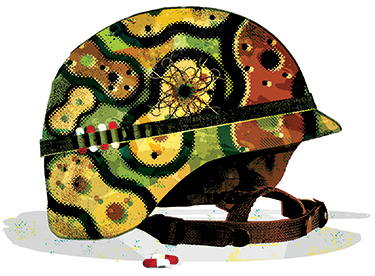Discoveries
Fighting Pancreatic Cancer
Aug 05, 2019 Cedars-Sinai Staff

Gary Neill
The nation’s third-leading cause of cancer-related deaths, pancreatic cancer is a slippery foe that arrives later in life, often in patients with no history of smoking, drinking or other harmful habits. Its unpredictability adds to its deadliness, as symptoms seldom appear in early, more treatable stages. One bright spot is that survival rates have increased from 4% to 9% over the past five years.
At Cedars-Sinai, Andrew Hendifar, MD, medical director of Pancreas Oncology, and Stephen J. Pandol, MD, director of Basic and Translational Pancreas Research, are taking a variety of paths toward greatly improving those percentages.
Precision Promise
Hendifar and colleagues are expanding patient options through Cedars-Sinai’s participation as a clinical trial site of the Pancreatic Cancer Action Network’s Precision Promise initiative, dedicated to doubling survival by 2020. The initiative complements a multisite trial to prevent a muscle-wasting condition called cachexia by trying to determine whether optimizing nutrition, physical activity and use of an anti-inflammatory improve outcomes, Hendifar says.
The Earlier, the Better
Cedars-Sinai collaborates with investigators around the globe to identify people at risk and determine who actually has early pancreatic cancer, Pandol says. “We do this using blood and urine tests, and we’re improving how we use CT scans and MRIs to find cancer early, when it’s easier to miss it.”
Drugs Target Tough Problems
The investigators are developing medications to prevent both metastasis of cancer and drug resistance. “We started with two agents combined in a test tube and then studied in animal models, and that positively affected both problems,” Pandol says.
Pursuit of Immunotherapies
Thus far, immunotherapy hasn’t worked well for pancreatic cancer, Pandol says. “This cancer puts up a ‘screen’ so the natural immune system can’t attack it,” he adds. Hendifar is trying new combinations to address this problem.
Stem Cell Science
The team is gearing up to obtain stem cells from patients with cancer and relatives who may carry risk factors. “We will investigate how to identify those at risk, and how to reverse it,” Pandol says.


